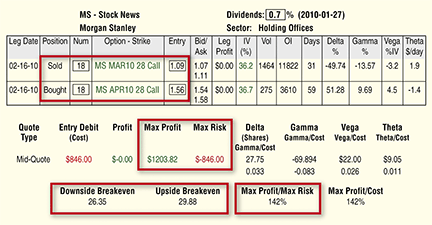OPTIONS
Which Trade Suits Your Objectives Better?
The Double Calendar Spread
Markets not going anywhere? Then take advantage of this neutral option strategy that you can use in stocks, indexes, and futures contracts.
Option trading offers investors and traders a variety of unique opportunities that are simply not available to those who trade only the underlying stocks, futures, or indexes. Those who trade only the underlying securities see their prospects reduced to a simple formula. If you buy a given stock or futures contract, that stock or commodity must see its price increase in order for you to make money. Conversely, if you sell short a given stock or a futures contract, that stock or commodity’s price must decline in order for you to profit. There are no other possibilities.
This is not the case when trading options.
Over the years, traders have developed and refined a number of strategies designed to help them make money when a given security is going nowhere. One such strategy is known as the calendar spread. Traders have long used calendar spreads as a neutral play on numerous stocks, indexes, and futures contracts. But intrepid traders also never stop looking for ways to improve their odds of success and put their probabilities as far in their favor as possible.
This article will discuss an option trading strategy that offers that very possibility. The strategy is most commonly known as the double calendar spread, which, as you might guess, involves establishing multiple positions in an effort to increase the probability of a profitable trade. Before delving into this topic, however, let us begin by first reviewing a basic option calendar spread.

Figure 1: standard at-the-money call calendar spread. Here the trader buys the 28 strike price call with 59 days left until expiration and simultaneously sells the 28 strike price call with only 31 days left until expiration.